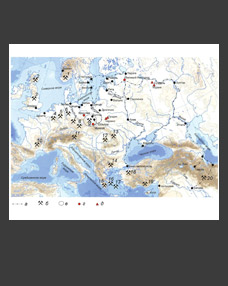 Elizaveta V. Veselovskaya1,2,*, Maria V. Dobrovolskaya3,**, Anna V. Mastykova3,***, Alexey N. Sviridov3,****, Natalia G. Svirkina3,***** and Evgeny S. Bogomolov4,5,******
Elizaveta V. Veselovskaya1,2,*, Maria V. Dobrovolskaya3,**, Anna V. Mastykova3,***, Alexey N. Sviridov3,****, Natalia G. Svirkina3,***** and Evgeny S. Bogomolov4,5,******
1 Russian State University for the Humanities, Moscow, Russia
2 Institute of Ethnology and Anthropology RAS, Moscow, Russia
3 Institute of Archaeology RAS, Moscow, Russia
4 Centre for Isotopic Research, Institute of Precambrian Geology and Geochronology RAS, Saint-Petersburg, Russia
5 A.P. Karpinsky Russian Geological Research Institute, St. Petersburg, Russia
* E-mail:labrecon@yandex.ru
** E-mail:mk_pa@mail.ru
*** E-mail:amastykova@mail.ru
**** E-mail:a_sviridov@mail.ru
***** E-mail:svirkina.natalia@mail.ru
****** E-mail:e.bogomolov@mail.ru
Keywords: Crimea archaeology, the Frontovoye 3 burial ground, women’s burial, craniometry, craniofacial reconstruction of the appearance, contour reconstruction, sculptural reconstruction.
In the Roman-era necropolis Frontovoye 3, uncovered in 2018 in the Southwestern Crimea, three burials were discovered in ground crypt 16. One of them (skeleton 1) belonged to a woman 30-39 years old. Due to the good preservation of the skull, it was chosen for craniofacial reconstruction of the buried woman. To reconstruct the appearance, the method of M.M. Gerasimov was used supplemented with new developments, namely the “Appearance Algorithm” programme. A paleoanthropological study was conducted. The complete information about the lifetime dimensional characteristics of the woman’s head was obtained, and the qualitative lifetime individual features of her appearance were determined. The final stage is the creation of a sculptural reconstruction of the woman’s appearance. The paper features a contour reconstruction illustrating the process of restoring the appearance based on the skull.
DOI: 10.31857/S0869606324030092, EDN: WZYDHM







